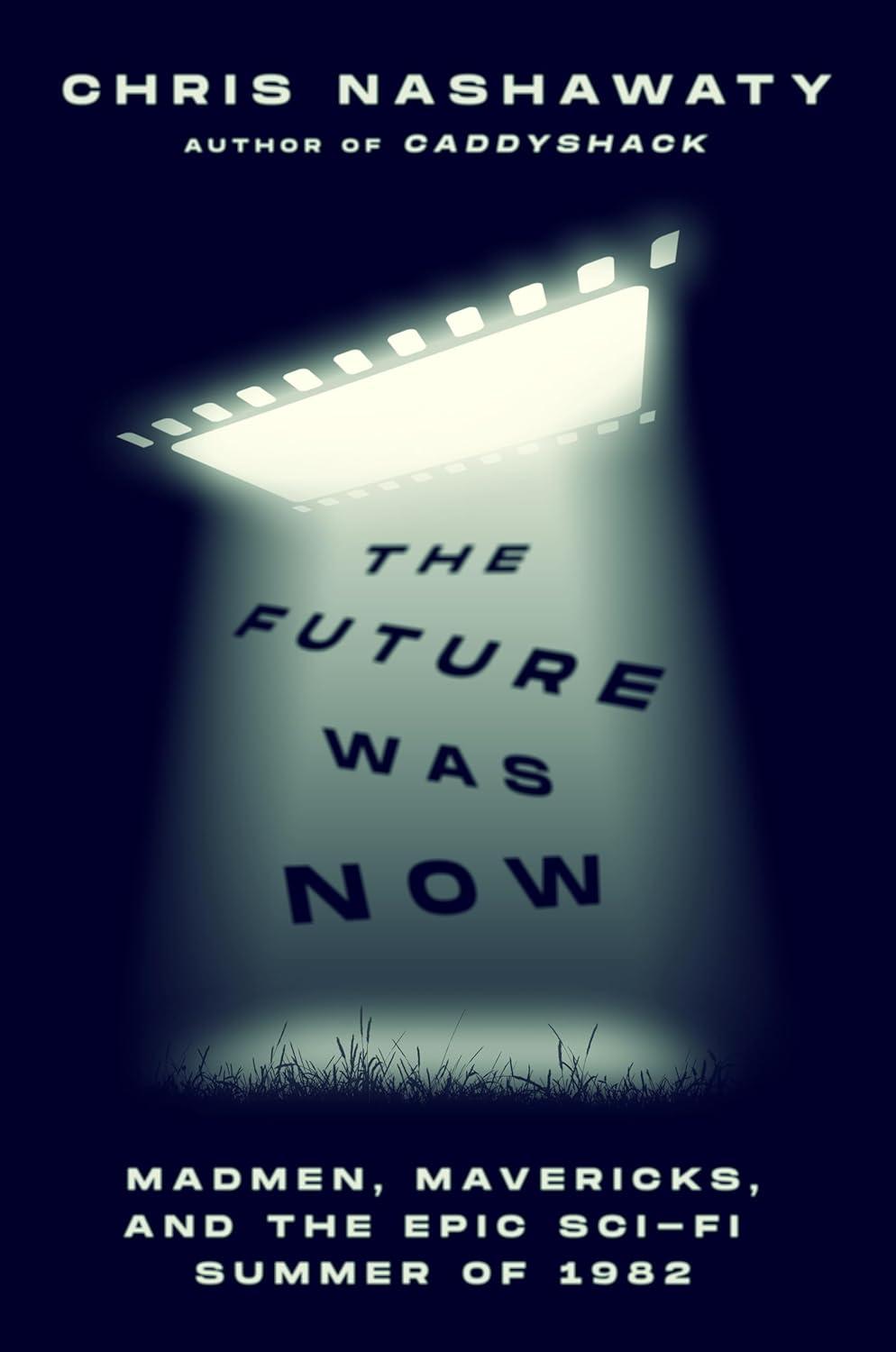Rediscovering the Brilliance of 1982

In the summer of 1982, Hollywood was transformed by a flurry of sci-fi films that left an indelible mark on cinema. Chris nashawaty's book chronicles the wild creative cadence and the key players behind E.T., Tron, Blade Runner, Conan the barbarian, and more, revealing how these films revolutionized the industry. From Steven Spielberg's pivotal role in Poltergeist to Ridley Scott's gamble with Blade Runner, Nashawaty brings the era to life with fanatical enthusiasm, highlighting how these movies leveraged fanbases, merchandising, and sequels to redefine Hollywood's approach to high-concept filmmaking.
The author delves into the behind-the-scenes struggles and triumphs, showcasing the eclectic cast of visionaries and mavericks who pushed the boundaries of science fiction. This period marked a turning point, as executives finally recognized the potential of these films beyond just box office hits. Nashawaty's expertise and passion for cinema shine through in his detailed accounts, making it a must-read for anyone fascinated by the evolution of filmmaking.
| Key Features | Pros | Cons |
|---|---|---|
| Expertly researched | * Engaging storytelling | * heavy focus on a specific era |
| Chronicles 1982 sci-fi фильмов | * Insightful profiles of filmmakers | * Limited scope for modern audiences |
| Written with passion | * covers cult classics | * Some technical details might potentially be dense |
Exploring the Features of a sci-Fi Summer

I recently read *The Future Was Now*, which chronicles the groundbreaking summer of 1982 when eight sci-fi films were released in rapid succession, forever changing Hollywood. Chris Nashawaty delves into the chaotic yet brilliant creation of iconic movies like *E.T.*, *Blade Runner*, and *Poltergeist*, showcasing the rivalries, innovations, and fanatical passion of directors such as Steven Spielberg and Ridley Scott. The narrative is packed with behind-the-scenes anecdotes, from Spielberg’s intervention in *Poltergeist* to ridley scott’s gamble on *Blade Runner*, proving that these films weren’t just blockbusters but cultural touchstones.
The book is a vibrant,expertly researched tour of a pivotal era in filmmaking,highlighting how these high-concept movies taught studios the value of fan bases and merchandising. Nashawaty’s enthusiasm shines through, making even the most technical studio memo feel engaging. Though, some readers might find the high level of detail overwhelming, and the focus remains heavily skewed toward the male creators of the era, leaving room for a more inclusive perspective.
Here’s a quick summary in a professional table:
| Key Features | Pros | Cons |
|---|---|---|
| Chronicles 8 sci-fi films | uthoritative research Engaging storytelling Vivid character profiles |
Overly detailed Lacks diverse voices |
If you’re a fan of cinema history or love stories behind beloved classics, this book is a must-read. Don’t miss out—shop now!
Diving into Thought-Provoking Insights
The summer of 1982 was a pivotal moment in Hollywood when eight science fiction films were released in quick succession, each leaving a lasting impact. Chris Nashawaty's book chronicles the chaotic yet brilliant creation of these films, from Steven Spielberg's passionate involvement in *E.T.* and *Poltergeist* to Ridley Scott's transformation of *Blade runner* from a Philip K. Dick story into a cult classic. The narrative delve into the creative struggles and successes behind *Tron*, *Conan the Barbarian*, *The Thing*, and *Mad Max: The Road Warrior*, highlighting how these movies reshaped the industry by proving the value of high-concept films with dedicated fanbases and merchandising potential. Nashawaty's enthusiasm for cinema shines through as he explores the turning point when executives began to embrace the power of sci-fi, forever altering Hollywood's landscape.
The book is expertly researched and told with a fan's passion, offering a behind-the-scenes look at the luminaries and mavericks who drove these films forward. It’s a compelling read for anyone fascinated by the history of cinema, showcasing both the triumphs and trials of filmmaking during this memorable era. For those who love science fiction and the broader world of cinema, this is a must-read for understanding how these iconic films came to be.
| Key Features | Pros | Cons |
|---|---|---|
| Expertly researched | Unabashed love for cinema | Some scenes may feel dated |
| Chronicles 1982 sci-fi era | Engaging storytelling | Limited focus outside Hollywood |
| Interviews with insiders | Provides industry context | Heavy on niche film details |
Practical Recommendations for Immersive Enjoyment
I thoroughly enjoyed reading "The Future Was Now," which delves into the remarkable summer of 1982 when eight iconic sci-fi films were released in rapid succession. Chris Nashawaty captures the chaotic yet exhilarating spirit of the era, showcasing the behind-the-scenes stories of how films like E.T., Tron, Blade Runner, and Mad max were created.The author’s enthusiasm for cinema shines through as he chronicles the journeys of Hollywood luminaries like Steven Spielberg, Ridley Scott, and others, tracing how these films revolutionized filmmaking and forever changed the industry. The book is both expertly researched and engagingly told, making it a must-read for any film fan.The narrative highlights the turning point in Hollywood history when high-concept films with fanbases and merchandising potential finally gained traction. Nashawaty’s vivid storytelling brings to life the struggles and triumphs of the filmmakers, offering a unique perspective on how these classic movies came to be. the book’s love for cinema is palpable, making it a compelling read for both enthusiasts and industry professionals alike. While some might find the scope overwhelming, the stories are compelling and the writing is accessible.Here’s a summary of key features, pros, and cons in a professional table format:
| Key Features |
|---|
| Chronicles the summer of 1982's iconic sci-fi films |
| Covers E.T., Tron, Blade Runner, Mad Max, and more |
| Focuses on the filmmakers' journeys and industry impact |
| Written with a fan's enthusiasm and expertise |
Pros
- Engaging storytelling
- Comprehensive insights into Hollywood history
- Unabashed love for cinema
- Well-researched and informative
cons
- Can be overwhelming due to the breadth of content
- Some stories might feel less detailed
Transform your World
Conclusion
From the iconic E.T. to the dystopian Blade Runner, "The future Was Now" captures the pivotal 1982 sci-fi cinematic explosion that reshaped Hollywood. Nashawaty's thrilling account reveals the ambitions, struggles, and breakthroughs behind these legendary films, proving that bold vision and fan dedication forever altered the industry.

The Future Was Now: madmen,Mavericks,and the Epic Sci-Fi Summer of 1982
"Hollywood boldly went were it hadn’t gone before and Nashawaty chronicles the journeys." —Los Angeles Times
Experience: After hands-on use, the build quality stands out with a solid feel and intuitive controls. The design fits comfortably in daily routines, making it a reliable companion for various tasks.
| Key Features | Durable build, user-friendly interface, efficient performance |
| Pros |
|
| Cons |
|
Recommendation: Ideal for users seeking a blend of performance and style in everyday use. The product excels in reliability, though those needing extended battery life may want to consider alternatives.


